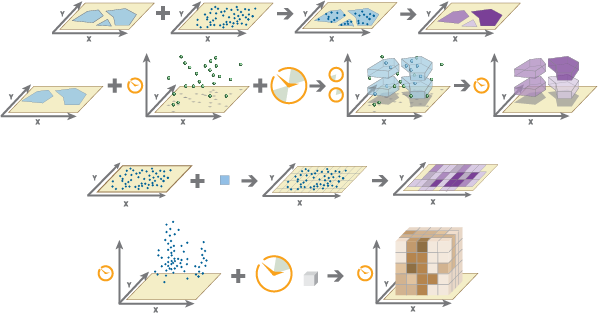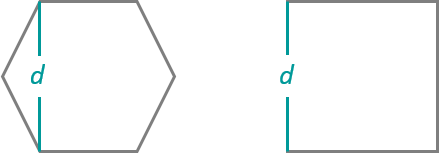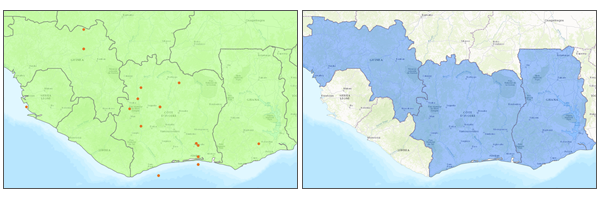| Label | Explanation | Data Type |
Point Layer
| The point features that will be aggregated into polygons or bins. | Feature Set |
Output Name
| The name of the output feature service. | String |
Polygon or Bin | Specifies how the Point Layer parameter value will be aggregated.
| String |
Polygon Layer (Optional) | The polygon features into which the input points will be aggregated. | Feature Set |
Bin Type
(Optional) | Specifies the bin shape that will be generated to hold the aggregated points.
| String |
Bin Size
(Optional) | The distance interval that represents the bin size and units into which the Point Layer value will be aggregated. The distance interval must be a linear unit. | Linear Unit |
Time Step Interval
(Optional) | A value that specifies the duration of the time step. This parameter is only available if the input points are time enabled and represent an instant in time. Time stepping can only be applied if time is enabled on the input. | Time Unit |
Time Step Repeat
(Optional) | A value that specifies how often the time-step interval occurs. This parameter is only available if the input points are time enabled and represent an instant in time. | Time Unit |
Time Step Reference
(Optional) | A date that specifies the reference time with which to align the time steps. The default is January 1, 1970, at 12:00 a.m. This parameter is only available if the input points are time enabled and represent an instant in time. | Date |
Summary Fields
(Optional) | The statistics that will be calculated on specified fields. | Value Table |
Data Store
(Optional) | Specifies the ArcGIS Data Store where the output will be stored. All results stored in a spatiotemporal big data store will be stored in WGS84. Results stored in a relational data store will maintain their coordinate system.
| String |
Bin Resolution
(Optional) | The resolution of the H3 bins. This is a value between 0 and 15 in which 0 will produce the largest H3 bins and 15 will produce the smallest H3 bins. | Long |
Derived Output
| Label | Explanation | Data Type |
| Output Feature Layer | The aggregated polygon features or bins. | Feature Set |


